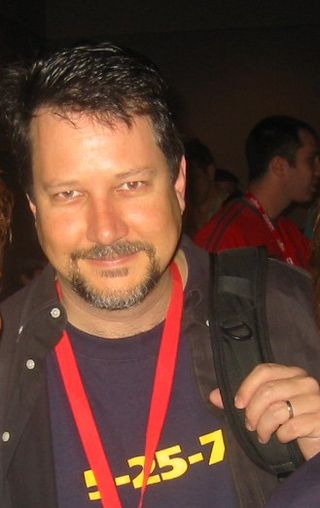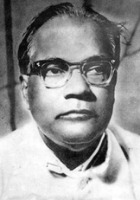
Autodesk Maya, commonly shortened to just Maya, is a 3D computer graphics application that runs on Windows, macOS and Linux, originally developed by Alias and currently owned and developed by Autodesk. It is used to create assets for interactive 3D applications, animated films, TV series, and visual effects.
Digital Domain is an American visual effects and digital production company based in Playa Vista, Los Angeles, California. The company is known for creating digital imagery for feature films, advertising and games from its locations in California and Vancouver, British Columbia, Canada, including its own virtual production studio.

John Knoll is an American visual effects supervisor and chief creative officer (CCO) at Industrial Light & Magic (ILM). One of the original creators of Adobe Photoshop, he has also worked as visual effects supervisor on the Star Wars prequels and the 1997 special editions of the original trilogy. He also served as ILM's visual effects supervisor for Star Trek Generations and Star Trek: First Contact, as well as the Pirates of the Caribbean series. Along with Hal Hickel, Charles Gibson and Allen Hall, Knoll and the trio's work on Pirates of the Caribbean: Dead Man's Chest earned them the Academy Award for Best Visual Effects.
The Cineon System was one of the first computer based digital film systems, created by Kodak in the early 1990s. It was an integrated suite of components consisting a Motion picture film scanner, a film recorder and workstation hardware with software for compositing, visual effects, image restoration and color management.
Pacific Data Images (PDI) was an American computer animation production company based in Redwood City, California, that was bought by DreamWorks SKG in 2000. It was renamed PDI/DreamWorks and was owned by DreamWorks Animation.

Karen Ansel is a visual effects specialist in the United States.

Nuke is a node-based digital compositing and visual effects application first developed by Digital Domain and used for television and film post-production. Nuke is available for Windows, macOS, and RHEL/CentOS Foundry has further developed the software since Nuke was sold in 2007.
Wavefront Technologies was a computer graphics company that developed and sold animation software used in Hollywood motion pictures and other industries. It was founded in 1984, in Santa Barbara, California, by Bill Kovacs, Larry Barels, Mark Sylvester. They started the company to produce computer graphics for movies and television commercials, and to market their own software, as there were no off-the-shelf computer animation tools available at the time. In 1995, Wavefront Technologies was acquired by Silicon Graphics, and merged with Alias Research to form Alias|Wavefront.

Patrick M. Hanrahan is an American computer graphics researcher, the Canon USA Professor of Computer Science and Electrical Engineering in the Computer Graphics Laboratory at Stanford University. His research focuses on rendering algorithms, graphics processing units, as well as scientific illustration and visualization. He has received numerous awards, including the 2019 Turing Award.

Golam Mostofa was a Pakistani Bengali writer and poet.
Ronald Paul "Ron" Fedkiw is a full professor in the Stanford University department of computer science and a leading researcher in the field of computer graphics, focusing on topics relating to physically based simulation of natural phenomena and machine learning. His techniques have been employed in many motion pictures. He has earned recognition at the 80th Academy Awards and the 87th Academy Awards as well as from the National Academy of Sciences.
2007 (MMVII) was a common year starting on Monday of the Gregorian calendar, the 2007th year of the Common Era (CE) and Anno Domini (AD) designations, the 7th year of the 3rd millennium and the 21st century, and the 8th year of the 2000s decade.
1978 (MCMLXXVIII) was a common year starting on Sunday of the Gregorian calendar, the 1978th year of the Common Era (CE) and Anno Domini (AD) designations, the 978th year of the 2nd millennium, the 78th year of the 20th century, and the 9th year of the 1970s decade.
Dan Lemmon is a New Zealand visual effects supervisor. In 2012, he was nominated for an Academy Award for the movie Rise of the Planet of the Apes. This was in the category of Academy Award for Best Visual Effects, his nomination was shared with Daniel Barrett, Joe Letteri and R. Christopher White.
Manarat Dhaka International School & College (MDIC) is a trust-owned school in Gulshan, Dhaka, Bangladesh. It offers British Curriculum from play-group to advanced level, offering GCE O-Level and GCE A-Level examinations, held under the University of Cambridge. Manarat emphasizes moral teachings and etiquette more than textbook knowledge. Manarat encourages its students to learn Arabic from a very young age. It also stresses Islamic teachings and inspires students to strengthen their iman.
The Pixar Photoscience Division, a division of Pixar Animation Studios, was founded in 1979 at Lucasfilm for the express purpose of designing and building a laser recorder/scanner system to input and output film to a computer for compositing and color correction of special effects. In the early years of Pixar's history, the team was responsible for the design of color monitoring instrumentation to control the color gamut and gamma of the digital images onto 35mm film using a more advance laser recorder system called PixarVision. In later years at Pixar, the team was responsible for transforming the artists computer-animated images onto film master negatives. Today the team manages all digital content to a variety of delivery media, film, DVD, and digital cinema projection. The team has won Engineering and Technical Academy Awards and patents for their work in Motion Picture Sciences.

M. Feroze Ahmed achieved excellence in teaching, engineering profession and scientific research and earned national and international recognition and awards as an eminent professor, civil engineer and scientist. He is the former vice-chancellor of Stamford University Bangladesh.
Rahul Chandrakant Thakkar is an Indian-American software inventor who was one of the 33 recipients of Academy Award for scientific and technical achievement in 2016. Thakkar won the Academy Award for creating the "groundbreaking design" of DreamWorks Animation Media Review System, a scalable digital film review platform.
Cottalango Leon is an Indian-American computer graphics technician who won the Academy Award for scientific and technical achievement jointly with Sam Richards and J. Robert Ray in 2016.

Simon Otto is a Swiss film director and animator. He is best known for working as the Head of Character Animation of the Oscar-nominated How to Train Your Dragon film trilogy for DreamWorks Animation.








